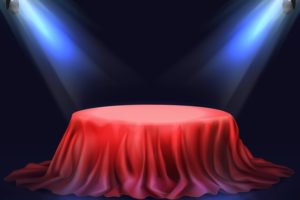How to Design Catchy Poster for Conference?
When you attend a conference as a poster presenter, it is very important to learn the ways to design a catchy poster for a conference.
As previously explained in a blog post about the types of presentations at a conference, poster presentation is the presentation of research information in the form of a paper poster that conference participants may view. It is a way to communicate your research or your understanding of a topic in a short and concise format.
Every conference selects submitted articles with good and rich scientific content for oral presentation and others for a poster presentation. The main reason for considering these two types of presentations at a conference is the time constraint. At many conferences and events, a large number of papers are submitted, and if all of these papers are to be accepted for oral presentation, a one-week conference schedule should be considered, which is impossible.
What is a Poster Presentation?
Posters are widely used in the academic community, and most conferences include poster presentations in their program. Research posters summarize information or research concisely and attractively to help publicize it and generate discussion.
The poster is usually a mixture of a brief text mixed with tables, graphs, pictures, and other presentation formats. At a conference, the researcher stands by the poster display while other participants can come and view the presentation and interact with the author.
Due to space and time constraints on presenting all accepted articles, it is not possible to present all accepted articles orally and therefore some articles are accepted as posters.
Authors, who are invited to present their papers as posters, will present their papers in a printed form in an area dedicated for poster display at the conference. The poster author is expected to stand by the poster during the scheduled poster session to answer the questions by participants.
Posters are a common way to present the results of statistical analysis, research, paper, or other projects at professional and specialized conferences. After the article has been accepted for poster presentation, the author should refer to the conference site and prepare the paper in the format specified by the conference. On the day of the conference, the author should bring his paper. In many conferences, posters should usually be printed with large format printers.
Tips for Poster Preparation
To make the posters more interesting to the viewers, and design a catchy poster for a conference, you must note the following points when writing and preparing your article.
- Title: choose the title of your article so that it is short, draws interest, and is understandable to a wide range of audiences.
- Size: the poster should be short and concise; don’t include too much content in the poster.
- Clarity: the poster should include content in a simple and clear way.
- Format: It is better to use tables, graphs, and pictures in a poster to facilitate faster information transfer to the audience.
How to Design a Poster?
Posters are an effective way to draw attention to your studies, and to communicate every little detail of your fantastic research. A successful poster, and a catchy poster for a conference, will not only attract a viewer’s attention, but will also outline accurately and concisely the aims, workings, and conclusions of your scientific research.
While there is no one right way to make a poster, there are still poster design best practices that you should follow.
1. Select proper software: The first step to designing a fantastic poster is to select proper software.
- PowerPoint is the most convenient, accessible popular, easy-to-use option to design a poster.
- Adobe Illustrator, Photoshop and InDesign: Feature-rich professional software that is good for posters including lots of high-resolution images, but they are more complex and expensive.
- Open Source Alternatives: OpenOffice in the free alternative to MS Office (Impress is its PowerPoint alternative). Inkscape and Gimp are alternatives to Adobe products. For charts and diagrams try Gliffy or Lovely Charts. A complete list of free graphics software.
2. Set your goal: If you think about your main goals from the beginning, you can use that goal to guide your design choices.
3. Consider your target audience: You should consider who you are trying to reach with your poster. Answering this question will probably inform a lot of your design choices.
4. Place of share: The final thing you should do before designing your poster is to think about where it will be shared.
5. Pick a color: One of the first things that someone is probably going to notice about your poster is the color scheme.
6. Use proper fonts: What information you choose to include on your poster will depend on the goal of your poster. But if you’re creating a fairly standard poster, it’s best practice to follow a hierarchy of information, using proper fonts.
7. Use icons: in order to visualize concepts in your poster design, you will need icons which are symbols used in design to represent concepts. Icons are the perfect way to enhance your poster design. You can use icons to embellish points and, in certain cases, replace text.
8. Use high-quality images: If you plan to print out the poster or enlarge it, using high-quality photos is very important.
What makes a Good Poster?
- Important information should be readable from about 10 feet away
- The title is short and draws interest
- Word count of about 300 to 800 words
- Text is clear and to the point
- Use of bullets, numbering, and headlines make it easy to read
- Effective use of graphics, color, and fonts
- Consistent and clean layout
- Includes acknowledgments, your name, and institutional affiliation



